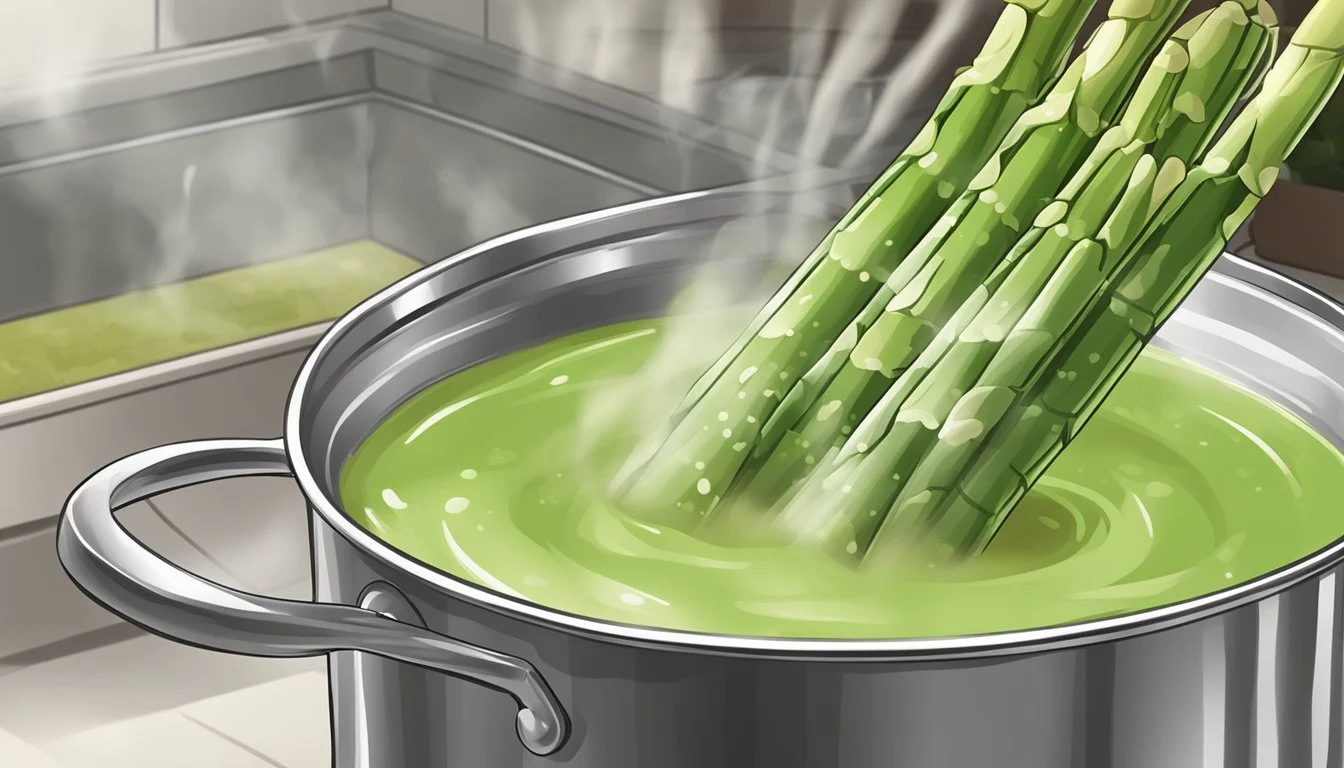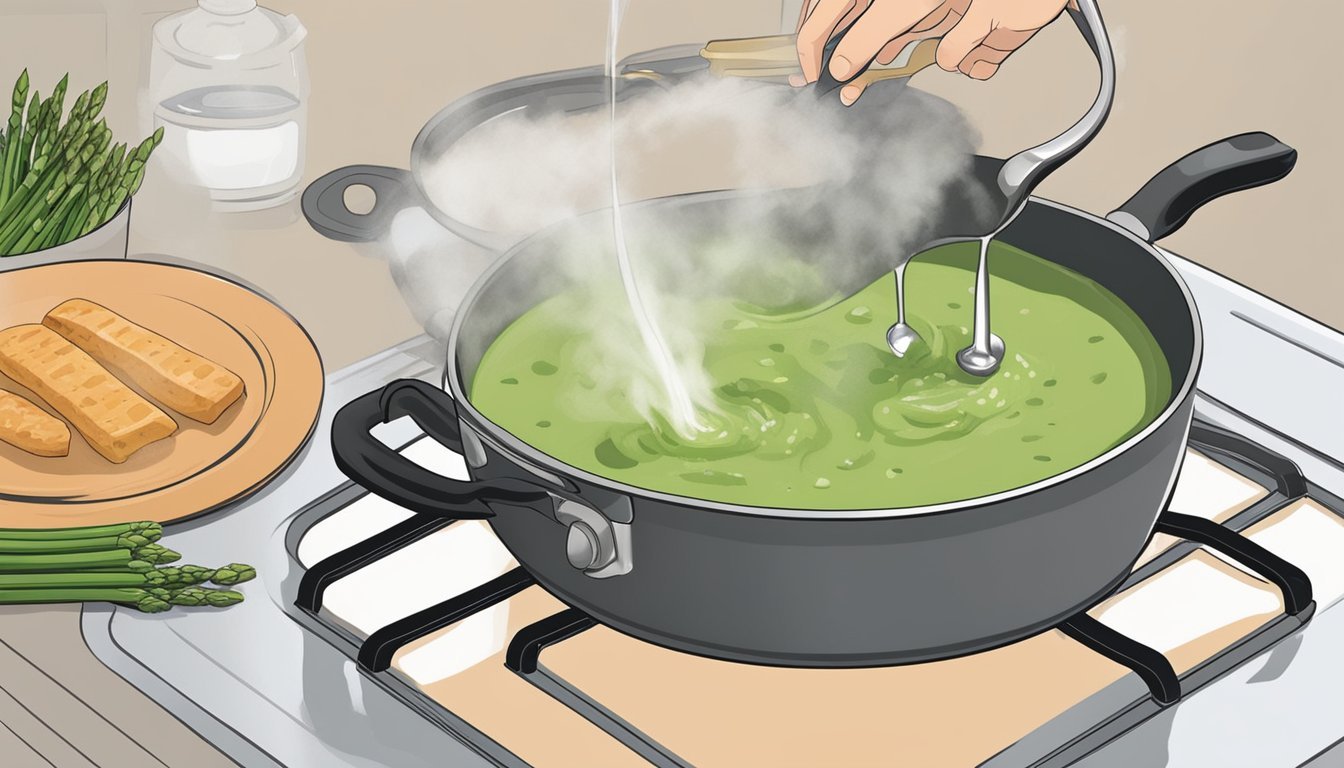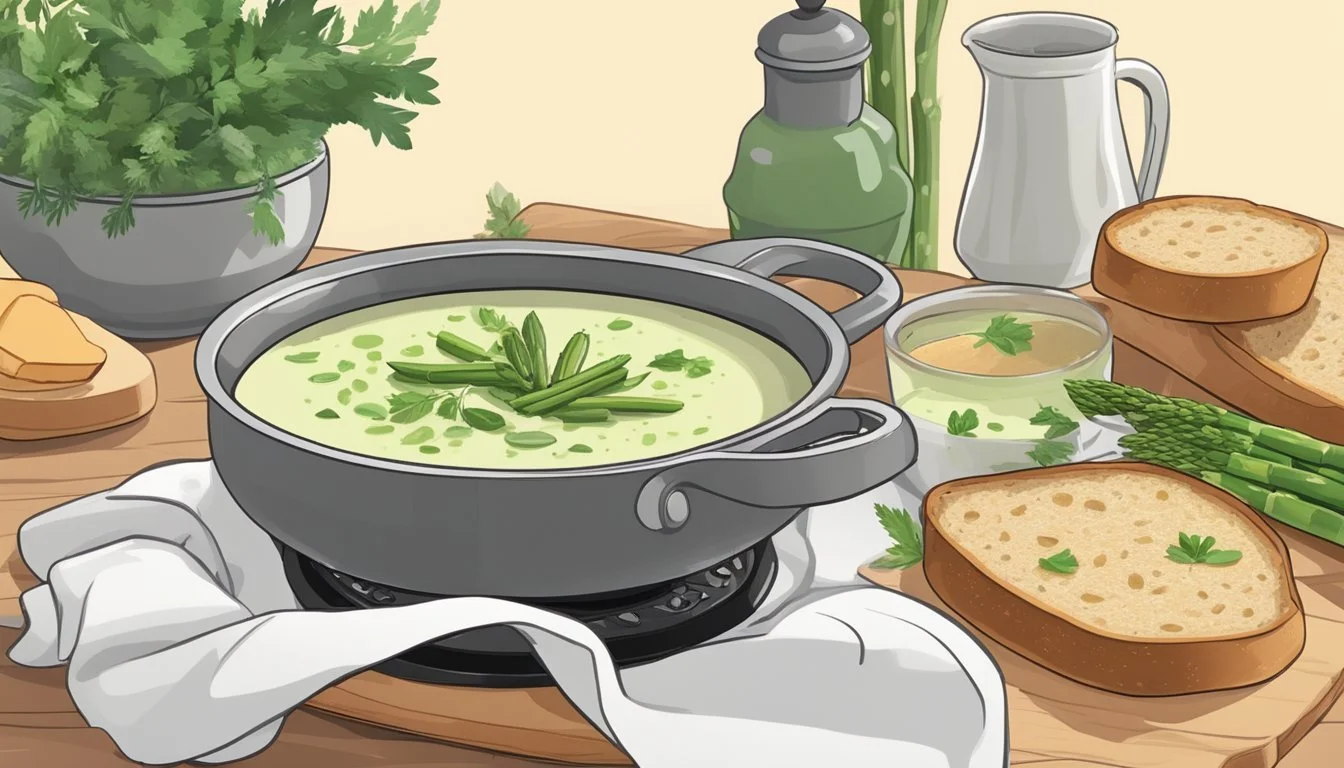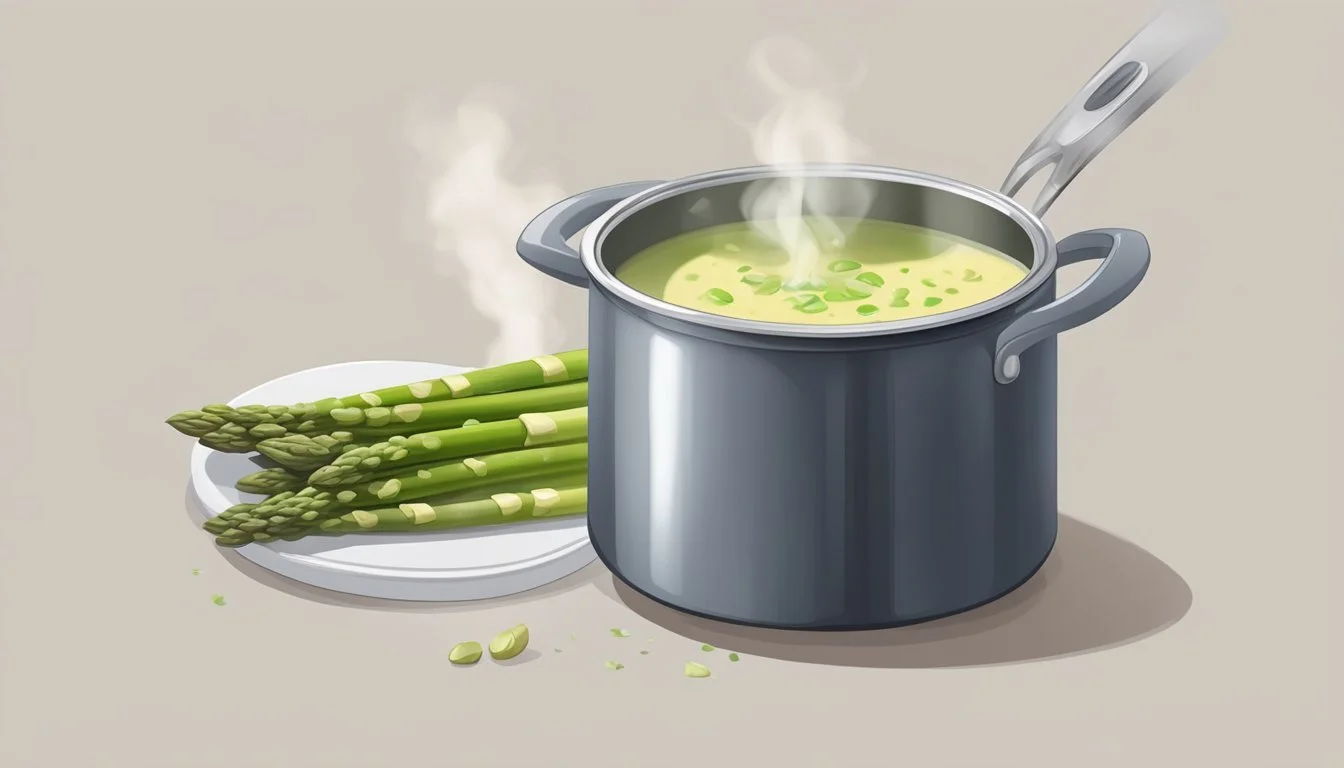Best Way to Reheat Cream of Asparagus Soup
Tips for Preserving Creaminess and Flavor
To maintain the creaminess and flavor of cream of asparagus soup upon reheating, a gentle approach is essential. The delicate texture of cream-based soups (What wine goes well with soups?) means that hasty or high-heat methods can lead to separation and a loss of the smooth, velvety quality that makes these soups enjoyable. Cream of asparagus soup, with its rich blend of tender asparagus and creamy base, requires careful reheating to preserve its nuanced flavors and prevent the dairy components from curdling.
Using stovetop reheating offers the best control over temperature, which is critical for retaining the integrity of the soup. A low to medium-low heat setting allows the soup to gradually return to temperature, minimizing the risk of overheating. Constant stirring is recommended to ensure even heat distribution and maintain the emulsion of the cream-based soup. Gentle stirring also reincorporates any separation that may have occurred during cooling or storage.
For soup enthusiasts who need a more convenient method, the microwave can be a viable option, though it demands caution. Reheating in short intervals at reduced power, stirring between each burst of heat, can lead to satisfactory results. This incremental heating helps to avoid the sudden temperature spikes that are notorious for ruining the texture of cream-based soups. Whichever method is chosen, patience is the key to restoring cream of asparagus soup to its just-cooked taste and consistency.
Selecting the Best Reheating Method
When reheating cream of asparagus soup, one's goal is to maintain its creamy consistency and rich flavor. The method chosen is crucial for preserving the soup's texture and preventing separation.
Stovetop Reheating
Reheating on the stovetop allows for gentle warming that can keep the soup's creamy texture consistent. The process involves heating the soup over low to medium heat. One should stir the soup regularly to ensure even heat distribution and to prevent it from sticking to the bottom of the pot. The soup should be heated until it is warm throughout, but not boiling, to avoid altering its texture and flavor. The keyword here is to simmer the soup gently until it reaches the desired temperature.
Microwave Reheating
For those seeking a quicker reheating method, the microwave can be an effective option. To reheat cream of asparagus soup in the microwave:
Pour the soup into a microwave-safe bowl, covering it loosely with a microwave-safe lid or plastic wrap.
Heat on a medium power setting, stirring every 30 seconds to prevent hotspots and to maintain uniformity in texture.
One should be cautious not to overcook as this could spoil the soup's consistency, making it less creamy and altering its delicate asparagus flavor.
Oven Reheating
Oven reheating is less common for cream of asparagus soup but can still be utilized effectively, especially when reheating large quantities. The soup should be placed in an oven-safe dish and covered with foil to prevent a skin from forming on the surface. The soup can be reheated at a low temperature (around 325°F or 165°C) until it is evenly warm. This method allows for a slow increase in temperature, safeguarding the soup's creamy texture. However, it's essential to stir the soup occasionally throughout reheating to ensure even warming and to protect its texture.
Pre-Reheating Preparation
Before reheating cream of asparagus soup, one must ensure the consistency and flavor are preserved. Preparation is key to maintaining those delicious qualities that make the soup enjoyable.
Stir the Soup to Homogenize
One should begin by stirring the soup thoroughly. This helps to redistribute ingredients that may have settled or separated, achieving a uniform texture throughout. Cooling often causes components such as butter and heavy cream to separate slightly. Gentle stirring can recombine these elements, leading to a smoother blend upon reheating.
Adjusting Thickness Before Reheating
Sometimes, cream of asparagus soup may thicken when stored in the refrigerator. Before reheating, one may need to adjust the thickness. If the soup is too thick, adding a small quantity of water, broth, or heavy cream can help. It’s important to add the liquid gradually and stir well between each addition until reaching the desired consistency.
For thinner consistency:
Add liquid 1 tablespoon at a time, stirring well.
For thicker consistency:
Mix 1 teaspoon of cornstarch with 1 tablespoon of cold water, then integrate into the soup.
This preparation ensures the asparagus soup returns to a creamy state, enhancing both its flavor and texture.
Utilizing Culinary Techniques for Creaminess
To preserve the delicate texture and rich flavor of cream of asparagus soup when reheating, one must employ precise culinary techniques. These techniques focus on the proper usage of emulsifiers and temperature control.
The Role of Emulsifiers
Emulsifiers such as butter play a crucial role in maintaining the creaminess of the soup. They work by stabilizing the mixture, ensuring that the water and fat do not separate. When reheating, it's important to incorporate a small amount of butter to fortify the soup's emulsion. Additionally, one can add a touch of olive oil, which can contribute to a silky mouthfeel and enhance the flavor profile.
Maintaining a Gentle Heat
Applying a gentle heat is essential to avoid breaking the soup's emulsion. The soup should simmer at a low temperature to prevent it from boiling, which can cause the dairy elements to curdle and separate, compromising the soup's smooth texture. One can employ the following steps:
Transfer the soup to a pot and set it on a stove.
Adjust the burner to a low setting, steadily bringing the temperature up.
Stir frequently with a whisk to distribute the heat evenly.
For best results, using a blender after reheating can reintegrate any ingredients that may have separated, ensuring a creamy consistency throughout the soup. This facilitates a uniform texture and temperature, making each spoonful as enjoyable as if freshly made.
Seasoning Adjustments Post-Reheating
After reheating the Cream of Asparagus Soup, the flavor profile may need some fine-tuning. The delicate balance of seasonings can sometimes shift during the reheating process, so it is essential to adjust the seasonings to maintain the desired taste.
Balancing Flavors with Salt and Pepper
Proper seasoning is crucial for reviving the full flavor of the soup. To balance flavors post-reheating:
Salt: Add a pinch of salt if the soup tastes bland; salt can enhance the flavor of asparagus and cream without overwhelming the dish.
Black Pepper: Freshly ground black pepper adds a slight heat and aroma, complementing the creaminess of the soup. Use it sparingly and taste as you go.
Enhancing with Additional Ingredients
To elevate the soup beyond its base flavor:
Lemon Juice: A squeeze of lemon juice can add a refreshing zest and brighten the overall taste, helping to cut through the richness of the cream.
Garnish: Freshly chopped dill not only adds a visual appeal but also introduces a subtle anise-like flavor that pairs well with the creaminess of the soup.
In conclusion, these subtle but significant adjustments can help ensure that the cream of asparagus soup retains its intended savoriness and character, even after reheating.
Serving Suggestions and Accompaniments
When enhancing the enjoyment of reheated cream of asparagus soup, one must select sides and garnishes that complement the soup's creaminess and flavor profile without overwhelming it.
Suitable Sides and Bread Pairings
Crusty Bread: A slice of crusty bread such as a baguette or sourdough provides a satisfying crunch and is excellent for dipping into the soup.
Salad: A light, lemony arugula salad with shaved parmesan cheese adds a fresh and tangy contrast to the soup's richness.
Quiche: (What wine goes well with quiche?) A small slice of a crustless spinach and asparagus quiche can be a protein-rich side that harmonizes with the soup.
Roasted Vegetables: Roasted vegetables, especially root vegetables, offer a caramelized flavor that pairs well with the earthiness of asparagus.
Garnishing for Visual and Flavorful Appeal
Lemon: A squeeze of lemon juice or lemon zest can brighten up the soup and enhance its flavor.
Fresh Herbs: Dill or parsley, finely chopped, bring color and a layer of freshness to each serving.
Cheese: A sprinkle of grated parmesan cheese melts smoothly into the hot soup for added umami.
Asparagus Tips: Reserved, lightly steamed asparagus tips add texture and reinforce the soup's main ingredient visually and tastefully.
Storing and Preserving Leftover Soup
Properly storing leftover Cream of Asparagus Soup ensures that its creaminess and flavor are maintained. The key lies in adhering to best practices in refrigeration and understanding effective freezing and thawing methodologies.
Refrigeration Best Practices
Storing in the Refrigerator:
Temperature: Keep the refrigerator at 40°F (4°C) or below.
Containers: Use airtight containers to preserve freshness.
Shelf Life: Refrigerated Cream of Asparagus Soup with heavy cream should be consumed within 2-3 days.
Steps for Refrigeration:
Allow the soup to reach room temperature within two hours of cooking to prevent bacterial growth.
Transfer the soup into airtight containers, leaving about an inch of space to accommodate expansion.
Place the container on a shelf in the refrigerator where the temperature is most consistent.
Freezing and Thawing Methodologies
Freezing the Soup:
Cooling: Prior to freezing, cool the soup as quickly as possible to preserve texture and flavor.
Containers: Opt for heavy-duty freezer bags or airtight plastic containers.
Portion Size: Divide into desired portion sizes before freezing to make thawing more convenient.
Steps for Freezing:
Cool the soup using an ice bath, stirring occasionally for even temperature distribution.
Ladle the soup into the chosen containers, leaving suitable headspace for expansion.
Label the containers with the date, then place them in the freezer where they can stay stable and flat.
Thawing and Reheating:
Refrigerator Thawing: Thaw the soup in the refrigerator for several hours or overnight.
Water Bath Thawing: For a quicker method, place the container in cold water, changing the water every 30 minutes.
Heating: Reheat gently on the stove, stirring frequently, to ensure even heating without separation, especially important due to the heavy cream content.
Health Benefits and Dietary Considerations
When reheating cream of asparagus soup, one must consider that asparagus not only brings flavor but also substantial health benefits. Choosing the right ingredients can cater to various dietary needs without compromising on taste.
Nutritional Value of Asparagus
Asparagus is a nutrient-packed vegetable that provides a variety of vitamins and minerals. It is high in fiber, which promotes digestive health, and is a good source of folate, essential for DNA synthesis and repair. Additionally, asparagus contains vitamin K, important for bone health, and is rich in antioxidants like vitamin E and glutathione which contribute to overall cellular protection.
Nutritional Highlights of Asparagus:
Fiber: Supports digestive health
Folate: Aids in DNA synthesis
Vitamin K: Essential for bone health
Antioxidants: Protects against oxidative stress
Low-Sodium and Dairy-Alternative Options
For those monitoring their sodium intake, preparing cream of asparagus soup with low-sodium vegetable broth can significantly reduce the overall salt content. Using alternative thickeners such as puréed cannellini beans can also provide a creamy texture without the need for traditional flour, beneficial for those seeking gluten-free options.
Incorporating dairy alternatives like unsweetened almond milk, soy milk, or Greek yogurt can provide a creamy consistency while catering to those with lactose intolerance or following a vegan diet. These substitutions ensure a wider range of individuals can enjoy the soup while still maintaining its rich flavor profile.
Troubleshooting Common Reheating Issues
Ensuring cream of asparagus soup retains its creamy texture and rich flavor during reheating requires attention to detail. This section addresses the steps to prevent soup separation and the methods to revive its inherent refreshing taste after storage.
Preventing Soup Separation
When reheating cream of asparagus soup, one may encounter the issue of the soup's texture changing, often leading to separation. To avoid this, they should:
Reheat Slowly: Begin by reheating the soup on a low heat, gradually increasing to medium, if necessary. A rapid change in temperature can destabilize the soup's emulsion.
Stir Regularly: Continuous, gentle stirring can assist in maintaining an even creamy texture, reducing the risk of separation.
Reviving Flavor in Leftover Soup
Over time, the vibrant flavor of cream of asparagus soup may dull. To enhance its flavor profile and ensure a thick and satisfying indulgence, one can:
Season to Taste: A pinch of salt or a squeeze of fresh lemon juice can brighten up the soup and bring out its rich flavors.
Garnish Smartly: Consider adding freshly cooked asparagus tips or a swirl of cream prior to serving for a refreshing contrast to the rich creaminess of the soup.
Creative Variations of Cream of Asparagus Soup
While the classic cream of asparagus soup is a delightful dish, there are ways to introduce new layers of flavor and texture to invigorate the traditional recipe. These variations not only enhance the soup but also tailor it to personal tastes and dietary needs.
Incorporating Different Vegetables and Herbs
Vegetable Add-Ins:
Asparagus Tips: For a textured contrast, add blanched asparagus tips to the soup after pureeing.
Potato: A diced potato can be cooked with the asparagus base, lending a hearty thickness to the soup.
Peas: Fresh or frozen peas add a hint of sweetness and vibrant color.
Tomato Soup: Swirl in tomato soup for a tart twist and a beautiful, contrasting hue.
Herbal Enhancements:
Basil: Fresh basil offers a fragrant, summery note.
Thyme: Earthy thyme complements the asparagus without overpowering it.
Chives: Chives bring a mild onion-like flavor that pairs nicely with the creamy soup base.
Transforming the Soup Into a New Dish
Transforming cream of asparagus soup into a new dish is a simple matter of creativity and pairing.
Soup Duo: Serve a cream of asparagus soup alongside a robust tomato soup for a "duo of soups" experience, maximizing flavor profiles.
Asparagus Bisque: Intensify the indulgence by using extra cream and cutting the asparagus into 1-inch pieces before blending into a luxuriant bisque, perfect for elegant dinners.
By carefully selecting additional vegetables, herbs, and adapting the dish, one can reinvent the classic cream of asparagus soup in surprising and delightful ways.







